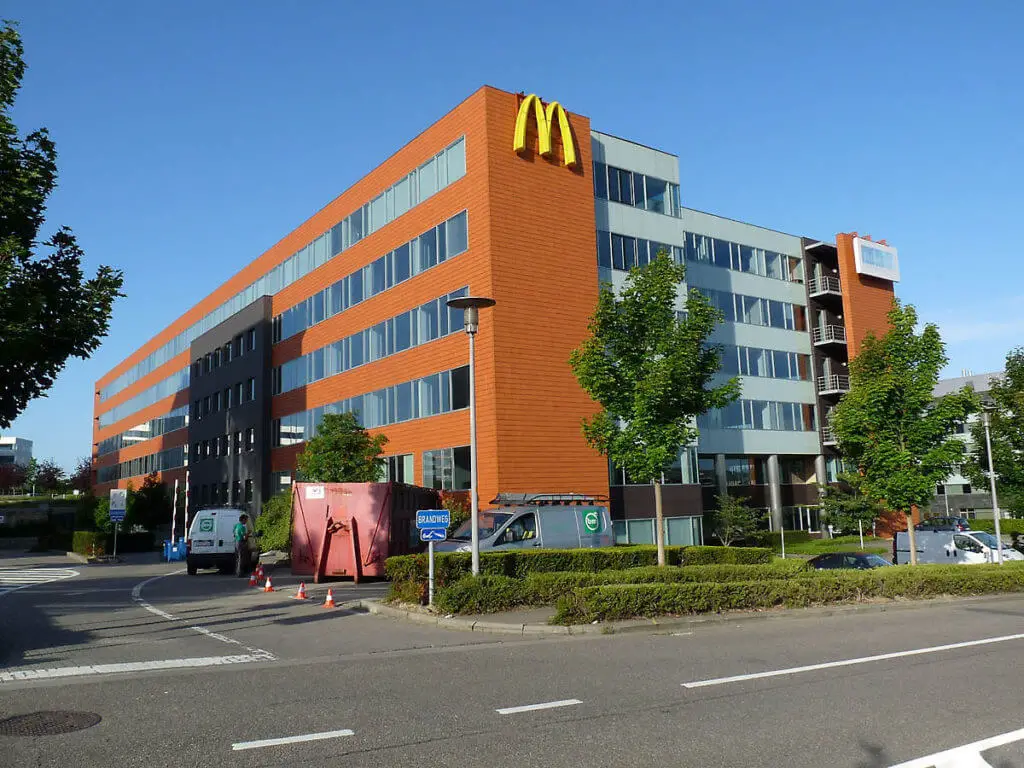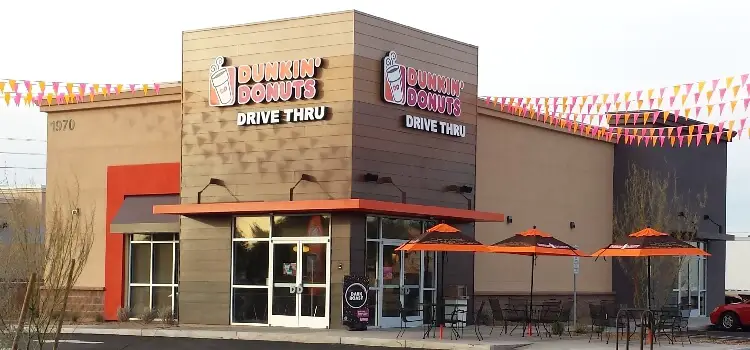McDonald’s Mission and Vision Statement Analysis (Updated)

In this article, we will examine McDonald’s mission statement, vision statement, and core values, analyzing what they mean and how they have evolved.
We will also explore the history of McDonald’s mission statement, highlighting key milestones in its development and evolution.
Through this analysis, we hope to gain a deeper understanding of McDonald’s as a company and its commitment to providing customers with delicious feel-good moments.
About McDonald’s
McDonald’s is a multinational fast-food restaurant chain known for its signature menu items such as the Big Mac, Quarter Pounder, and french fries.
Founded in 1940 in San Bernardino, California, the company has grown to become one of the largest fast-food chains in the world, with over 38,000 locations in more than 100 countries.
McDonald’s is often associated with convenience, affordability, and consistency in its food and service.
McDonald’s Mission Statement
McDonald’s mission statement is: “To make delicious feel-good moments easy for everyone.” It can be analyzed in several parts to understand its meaning and implications fully.
Firstly, the mission statement emphasizes the importance of making moments that are “feel-good.” This can be interpreted as a focus on providing food and experiences that are enjoyable and satisfying for customers. The statement suggests that McDonald’s aims to create positive emotions and experiences for its customers.
Secondly, the mission statement highlights the importance of making these “feel-good moments” easy for everyone. This can be understood as a commitment to providing convenient and accessible services that are available to a wide range of people.
By making these experiences easy and accessible, McDonald’s aims to create a sense of inclusivity and community around its brand.
Thirdly, the mission statement implies a focus on deliciousness, which is a core aspect of the McDonald’s brand. The company is known for its signature menu items and flavors, and the mission statement suggests that McDonald’s prioritizes the taste and quality of its food.
Overall, the mission statement suggests that McDonald’s aims to provide enjoyable, accessible, and delicious experiences for its customers.
In addition, by emphasizing the importance of “feel-good moments,” the company aims to create positive emotions and connections with its customers while prioritizing convenience and accessibility.
McDonald’s Vision Statement
McDonald’s vision statement sounds as follows: “Our strategy is underpinned by our focus on running great restaurants, empowering our people, and getting faster, more innovative, and more efficient at solving problems for our customers and people.”
The vision statement emphasizes the importance of running great restaurants, which can be understood as a commitment to providing high-quality food, service, and experiences to customers. This suggests that McDonald’s prioritizes excellence and consistency in its operations.
Additionally, the vision highlights the importance of empowering McDonald’s people, which can be interpreted as a focus on employee development, engagement, and satisfaction. This suggests that McDonald’s values its employees as a critical part of its business success.
It also implies a commitment to innovation and efficiency in problem-solving. This can be understood as a focus on continuous improvement and staying ahead of competitors through new ideas and approaches. This suggests that McDonald’s aims to remain relevant and competitive in a rapidly changing market.
To put it short, the vision statement suggests that McDonald’s aims to be a successful, innovative, and people-oriented business that prioritizes excellence, employee empowerment, and problem-solving. By emphasizing these aspects of its strategy, the company aims to maintain its position as a leading fast-food chain and continue to provide value to its customers and stakeholders.
McDonald’s Core Values
McDonald’s core values are service, inclusion, integrity, community, and family. Here is a detailed analysis of each of these values:
- Serve: This value highlights McDonald’s commitment to providing high-quality service to its customers. It implies a focus on putting customers first and ensuring that their needs are met. McDonald’s emphasizes the importance of service by training its employees to be friendly, efficient, and attentive to customers’ needs.
- Inclusion: This reflects McDonald’s commitment to creating an inclusive environment that welcomes diversity and respects differences. It implies a focus on treating all customers and employees with respect, regardless of their background or identity. McDonald’s aims to create a welcoming environment for everyone, regardless of race, ethnicity, gender, religion, or sexual orientation.
- Integrity: This emphasizes McDonald’s commitment to doing the right thing, even when it’s not easy or popular. It implies a focus on honesty, transparency, and ethical behavior. McDonald’s aims to build trust with its customers and stakeholders by demonstrating integrity in its actions and decisions.
- Community: This value reflects McDonald’s commitment to being a responsible and active member of the communities it serves. It implies a focus on giving back to local communities, supporting local businesses, and addressing social issues. McDonald’s aims to create positive change in the communities it operates in by partnering with local organizations and engaging in philanthropic activities.
- Family: This reflects McDonald’s focus on family-friendly experiences, both in its restaurants and in its advertising. It implies a commitment to creating an environment that is welcoming and comfortable for families with children. McDonald’s aims to create positive memories and experiences for families by offering menu items and activities that appeal to children and adults alike.
Overall, McDonald’s core values reflect its commitment to providing high-quality service, fostering inclusion and diversity, upholding integrity, being an active member of local communities, and creating family-friendly experiences.
By emphasizing these values, McDonald’s aims to build a strong brand identity and maintain a positive reputation with its customers and stakeholders.
McDonald’s Mission Statement History
Here is an outline of McDonald’s mission statement history, grouped by year from newest to oldest:
- Present day: McDonald’s mission statement is “Our mission is to make delicious feel-good moments easy for everyone.“
- 2020: McDonald’s previous mission statement was “To be our customers’ favorite place and a way to eat and drink.” This mission statement emphasized the importance of customer satisfaction and convenience.
- 2014: McDonald’s mission statement was “To be the world’s best quick-service restaurant experience.” This mission statement reflected the company’s focus on providing high-quality service and experiences to customers.
- 2003: McDonald’s mission statement was “To be the best quick service restaurant experience. Being the best means providing outstanding quality, service, cleanliness, and value so that we make every customer in every restaurant smile.” This mission statement emphasizes McDonald’s commitment to excellence and customer satisfaction.
- The 1980s-1990s: McDonald’s mission statement was “Quality, Service, Cleanliness, and Value.” This mission statement reflected the company’s focus on providing high-quality food and service to customers while also emphasizing the importance of cleanliness and affordability.
- The 1950s-1970s: McDonald’s mission statement was “QSC & V.” This shorthand phrase stood for Quality, Service, and Cleanliness, with the added emphasis on “V” for value. This mission statement reflected McDonald’s commitment to providing high-quality food and service to customers while also emphasizing the importance of affordability.
Overall, McDonald’s mission statement has evolved, reflecting changes in the company’s strategic priorities and customer expectations.
From a focus on quality, service, and cleanliness in the 1950s-1970s to a more customer-centric focus in the 2000s-2020s, McDonald’s mission statement has always emphasized the importance of providing value and satisfaction to customers.
Conclusion
In conclusion, McDonald’s is a globally recognized fast-food chain that has established itself as a leader in the industry.
The company’s mission statement, vision statement, and core values reflect its commitment to providing high-quality food and service to customers while also emphasizing the importance of inclusion, integrity, community, and family.
McDonald’s mission statement has evolved, reflecting changes in the company’s strategic priorities and customer expectations.
However, the company’s core focus on customer satisfaction and value has remained constant.
As McDonald’s continues to adapt to changing consumer trends and preferences, it will undoubtedly continue to play a significant role in the fast-food industry and remain a favorite of customers worldwide.
References
- Abdullah, Z., Shahrina, Nordin, M., & Abdul Aziz, Y. (2013). Building a unique online corporate identity. Marketing Intelligence & Planning, 31(5), 451-471.
- Boje, D., Driver, M., & Cai, Y. (2013). Fiction and humor in transforming McDonald’s narrative strategies. In Organizations and Popular Culture (pp. 144-157). Routledge.
- Borodin, A., & Corwin, I. (2014). McDonald processes. Probability Theory and Related Fields, 158(1-2), 225-400.
- Chun, R., & Davies, G. (2001). E-reputation: The role of mission and vision statements in positioning strategy. Journal of Brand Management, 8(4), 315-333.
- Crawford, A. (2015). McDonald’s: A Case Study in Glocalization. Journal of Global Business Issues, 9(1), 11.
- Emerson, L., & Prang, Y. (2016). Compensation and Benefits: Company-Provided Benefits at McDonald’s. Handbook of Human Resources Management, 939-950.
- Frazier, E. (2013). Small business leadership and organizational culture, job satisfaction, and performance: Correlational research (Doctoral dissertation, University of Phoenix).
- Ghosh, M., Ghosh, A., & Ghosh, M. (2016). Impact and Influence of Culture on Brands in Indian Market. IOSR Journal of Business and Management (IOSR-JBM), 18(7), 54-60.
- Hu, W., & Xie, Y. (2013). Comparative Study of McDonald’s and Kentucky Fried Chicken (KFC) Development in China. Sanovia: Internal Business Administration.
- Jay, R., & Paul, B. (2016). Mission and vision.
- Kamal, R., Ashraf, M. Z., & Ali, A. (2014). McDonalds Pakistan: Food and Fun Together. Market Forces, 9(1).
- Kane, G. C. (2016). How McDonald’s cooked up more transparency. MIT Sloan management review, 57(2).
- Komańda, M. (2016). McDonald’s as a Cultural Brand in the Landscape of Attitudes of Polish Customers. Trends Economics and Management, 9(24), 33-43.
- McDonald – About Us.
- Mahajan, S. (2014). Competitive advantage through training and development in Mcdonald’s: a case study. International Journal of Management, IT and Engineering, 4(10), 403.
- Martins, L. L., Rindova, V. P., & Greenbaum, B. E. (2015). Unlocking the hidden value of concepts: a cognitive approach to business model innovation. Strategic Entrepreneurship Journal, 9(1), 99-117.
- Nandini, A. S. (2014). McDonald’s Success Story in India. Journal of Contemporary Research in Management, 9(3).
- Nguyen, P. (2015). Are you prepared for international franchising? This is a presentation given at the International Franchise Summit in Kuala.
- Pandey, P. (2014). Organizational culture-a root to prosperity. Management Insight, 10(1).
- Ramya, N. (2014). Retailing Business Model–Franchising. Paripex Indian Journal of Research, 3.


